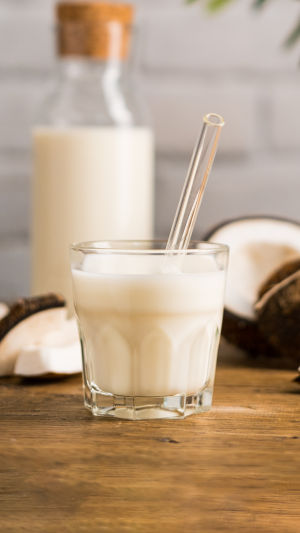Coconut milk plays an immensely significant role in Thai cuisine, serving not just as an ingredient but as an essential element in both traditional dishes and modern culinary innovations.
Its rich nutrients and distinctive flavor make it the cornerstone of Thai culinary identity, deeply influencing everyday eating habits and cultural heritage.
Coconut milk is derived from the flesh and juice of coconuts through a specific process. In Thailand, the technique of coconut milk extraction has a long history, typically involving the extraction and blending of coconut meat and juice, followed by straining to remove coconut solids, resulting in a thick, creamy liquid.
This process not only captures the natural sweetness and abundant fats of coconuts but also preserves their nutritional content, including vitamins, minerals, and fiber.
In traditional Thai cuisine, coconut milk is a key ingredient in many classic dishes, such as:
<b>1. Thai Curries:</b> Thai curries, which include red, green, and yellow varieties, are based on coconut milk. Each type is complemented with different spices and ingredients like galangal, lemongrass, and kaffir lime leaves, offering rich flavors and a silky texture.
<b>2. Coconut Milk Soups:</b> Examples include coconut milk winter melon soup and coconut milk chicken soup, where the milk's creamy texture and aromatic essence enhance the dishes' freshness.
<b>3. Coconut Milk Sticky Rice:</b> Coconut milk adds a sweet and aromatic touch to traditional sticky rice, often served as both a dessert and a main dish.
Coconut milk is also widely used in Thailand's street food scene:
<b>1. Fried Banana in Coconut Milk:</b> Slices of banana are deep-fried and then soaked in sweet coconut milk, making for a popular snack to satisfy afternoon cravings.
<b>2. Coconut Milk Pastries:</b> Examples include coconut milk bread and coconut milk sticky rice cakes, showcasing the versatility of coconut milk in various forms of street snacks.
Beyond its culinary appeal, coconut milk offers significant nutritional value and health benefits. Rich in medium-chain fatty acids and proteins, coconut milk is free from lactose and cholesterol, making it easier for the body to digest and suitable for individuals seeking cholesterol control.
With advancements in cooking techniques and cross-cultural influences, coconut milk has found its way into various creative dishes, even integrating into Western culinary elements:
<b>1. Coconut Milk Desserts:</b> Examples include coconut milk ice cream and coconut milk pudding, enjoyed by Westerners as well for their creamy texture and exotic flavor.
<b>2. Coconut Milk Beverages:</b> Beverages such as coconut milk coffee and coconut milk smoothies combine the milk's richness with refreshing drink choices, providing a new culinary experience.
In conclusion, coconut milk not only enhances traditional Thai dishes but also serves as a cultural link connecting people's taste buds and culinary memories. Its rich nutritional profile, diverse applications, and unique flavor have cemented its irreplaceable role in Thai and global cuisine.
Whether in traditional fare or contemporary innovations, coconut milk continues to exert its charm, influencing food choices and lifestyles while embodying cultural allure and culinary value.





